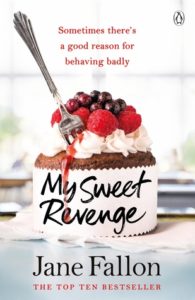Book Reviews
Hunting New Zealand – Parts Unknown
By Peter Ryan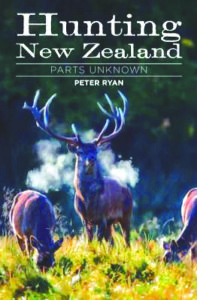
Bateman
RRP $40
Reviewed by Daryl Crimp
Seldom do you get the complete package, but Peter Ryan masterfully delivers it in Hunting New Zealand – Parts Unknown, a multi-layered tome that breaks the mould of contemporary hunting literature.
From the outset the book exudes style, with the jacket imagery hinting at what lies beneath but all the while illuminating through nuance – a delightful paradox that foreshadows Ryan’s writing. The artful photograph of confident stag frozen in time on a chilly morning speaks to the core of what it is to be a hunter, while the monarch’s distant stare defies Ryan to do the same with words. The back jacket is pure Peter Ryan – ambience and mood. Combine the two images and you get a sense of what is about to unfold.
This is a substantive read in which Peter sets the foundations on the bedrock of our hunting history but not in a textbook manner, and herein lies the ability of a great storyteller and masterful wordsmith; Ryan breathes life into his writing and evokes a kind of comfort that makes you want to hunker down, pour a single malt, and read on. What then unfolds is an eclectic mix of subjects and stories, with Peter paying homage to the land, the game, the pursuit, and the people who have influenced him in some way. It’s not a ‘whack ‘em and stack ‘em’ read but it has everything a good hunting book should have: roaring stags, alpine adventures, bird shooting, dogs, nostalgia, escapades from the venison recovery era, characters like ‘Crumpy’, huts, blizzards, gut-busters, guns and gear, and reminisces too.
Peter Ryan is also the complete package: accomplished hunter both of bird and game, fisher and consummate outdoorsman, active conservationist, husband and father, and son and heir to an undying legacy of life entwined with nature, and lover of wildlife and the marriage of simple pleasures like wine and wildfoods and naked fires. He is also a professional writer and author, therefore well-qualified to produce such a rich tapestry as this.
I said at the start it breaks the mould and in Peter’s own words it’s not another, “me, me, me book. Instead its a salute to those experts I’ve had the privilege to know…”
Throughout the book he has cameoed stories from many notable hunters including: Craig Boddington, Ken Tustin, Davey Hughes, Howard Egan, and many more. But, while Ryan is likeably humble, it is his writing that is the true showcase here. He has the ability to snuggle into subject matter and find some tiny evocative piece of prose that shines a light on it better than most. Like a mature red wine, Ryan’s writing is aged with the soft notes of Ruark and a hint of Hemingway. Perhaps Peter Ryan’s work is destined to become a classic of our time.
Masterfully constructed and a delight to read.
CAVES
CAVES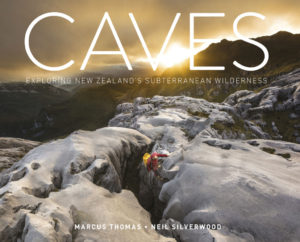
By Marcus Thomas & Neil Silverwood
Potton & Burton
Review Lynnaire Johnston
RRP $80
This is another hefty tome from a publishing house that specialises in whopping great books that pack a powerful punch.
Subtitled, ‘Exploring New Zealand’s Subterranean Wilderness’, Caves is nothing less than fascinating. Particularly as my only caving experience (near Waitomo) was memorable for all the wrong reasons. It was dark (who knew?), and wet, so how’s a girl supposed to cope!
Clearly there are many more adventurous, less claustrophobic souls than me who enjoy caving and I’m glad that’s true because this book is the result.
It is a magnificent work: fabulous photos, many of which cover a page and a half of this wide (400mm) format book; detailed maps of each of the 10 cave systems included; a glossary; an explanation of the country’s cave geology and even information about how caves are surveyed. Whew!
This is total immersion caving, past and present, told through the exploration of each system.
When a book is as well written as this you get hooked in to the story, but it’s the accompanying photos that truly steal the show. They portray cavers struggling through tiny gaps in rocks, underground waterfalls and streams, and the astonishingly diverse and beautiful lifeforms and crystals beneath our feet.
We spend an awful lot of time gazing up at the sky. We spend very little time contemplating what’s below us, let alone visiting it. Which, given its incredible beauty, is a pity. But perhaps caving will be the next adventure tourism trend. We certainly have enough of them to keep any number of international visitors happy.
Caves would make a great gift. You might be looked at a bit oddly by the recipient to begin with but, trust me, once they open it, they’ll be hooked. In fact, once you buy it you may decide to keep it for yourself. And I, for one, would completely understand.
Short review
Caves is the sort of book you spot in a shop and wish someone would buy for you, even if you’re not into caving. By the time you explore the huge amount of information presented and all the glorious photos contained in this book, you’ll be hooked – even if you never head underground yourself.
No Wall Too High
One Man’s Extraordinary Escape from Mao’s Infamous Labour Camps
By Xu Hongci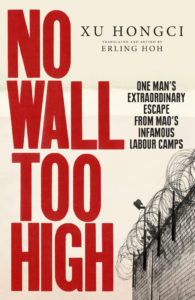
Translator Erling Hoh
Penguin Random House
Review Lynnaire Johnston
RRP $40
My attempt to read ‘One of the greatest escape stories’ (according to the Mail on Sunday) was not exactly a success. I wish it had been otherwise.
It is, after all, an amazing story. The author, Xu Hongci, was a medical student when he was incarcerated under Mao’s regime and forced to spend years of his youth in some of China’s most brutal labour camps. Three times he tried to escape. And three times he failed. But, determined, he eventually broke free, travelling the length of China, across the Gobi Desert, and into Mongolia.
A promising synopsis, but I struggled while not understanding why. After all, I read widely, often non-fiction (my favourite author is Bill Bryson), and regularly enjoy books that cross cultures. It didn’t make sense that I couldn’t get into Wall.
Eventually, I came up with three possible theories.
Theory one, non-fiction has changed. In the 45 years since this was penned, non-fiction has moved on. Modern non-fiction is easier to read and digest, and is packaged to appeal to a wider number of people, rather than merely the intellectual élite. Perhaps this makes reading earlier writing more difficult and with so much easily available choice, it’s simpler to move on to the next book in the bedside stack.
Theory two, innate cultural racism. I struggled with the Chinese names and couldn’t keep the characters straight. To me, the names were just a jumble of letters, the combination of which didn’t convey any meaning that my brain could retain.
Theory three, the translation was literal rather than literary. Translator Hoh had been intending to write a novel about a prison breakout when he stumbled on the true story of Xu Hongci and decided instead to translate the 572-page autobiography. The original work was an exact account, a diary, and unlikely to be intended as an engrossing saga which would entertain as well as inform.
Whichever theory or combination is right – the truth is that I didn’t finish Wall. Which is not to say it isn’t a good book. It just didn’t work for me. It may, however, work for you.
Ten Types of Human
 The Ten Types of Human
The Ten Types of Human
By Dexter Dias Penguin Random House
Review Lynnaire Johnston
RRP $40 Reviewing a book without first finishing it isn’t generally recommended. But Ten Types of Human is 768 pages long so maybe I’ll be forgiven. I could have waited and finished it first – I am up to page 277 – but I wanted to tell you about it now because if you read no other non-fiction book this year, make it this one. Unusually for non-fiction (unless it’s by Bill Bryson), I can hardly put it down. The mix of science, true stories and mirror to your soul is captivating. Here’s an example. You are the parent of a child whose school is under siege from an armed gunman. He has shot and killed multiple students
New Zealand’s Great White Sharks
How science is revealing their secrets
Alison Balance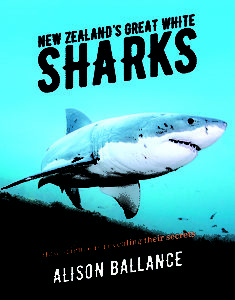
Published by Potton & Burton
RRP $30
Reviewed by Daryl Crimp
For many of us, the great white shark was propelled into our consciousness by four letters, JAWS. The 1974 novel, about a rogue killer white shark, propelled Peter Benchley to international acclaim and the great white to international infamy. The title was undeserved and Benchley later regretted writing the book and, in fact, spent the rest of his life advocating for oceanic conservation.
Finally, four decades later, a book has been produced that sets the record straight and does a great service to this magnificent ocean predator.
Apart from folk lore and anecdotal evidence, very little scientifically was known about the great white until comparatively recently, and much of the contemporary research has been conducted in New Zealand and Australian waters by shark biologists Malcolm Francis (NIWA) and Clinton Duffy (DoC). Allison Balance has followed this study, called ‘The Great White Shark Project’, for a decade, so is well qualified to pen this book, which is essential a mixture of natural history text book overlaid with non-fiction adventure.
As we have come to expect from Potton & Burton, the production values of this book are high: hard cover, full colour, liberally illustrated, and beautifully laid out. The narrative is aimed to appeal to a broad audience, from young adult to adult, so is quite prosaic and informative but nonetheless engaging and crisp in its delivery. The book leans more toward an educational read that can easily be picked up and put down, and read in stages, than a cover to cover comfort read.
However, mixed in with the fascinating facts and discoveries about the great whites, is the human element and a story of passion and compassion. The key protagonists have clearly developed a deep love and respect for this giant predator but the triggers to this interest are as fascinating as the individuals. From the visual epiphany of a four-year-old to a near death underwater encounter, the catalyst has brought this team together with a driving desire: to find out more about this incredible fish and, through knowledge, understanding, and education, shine a healthy light on the future of New Zealand’s great white sharks.
Highly recommended as a resource, good read, and a gift.
Leap of Faith
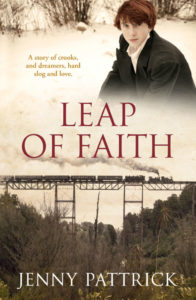 Jenny Pattrick
Jenny Pattrick
Black Swan
$38
If you’ve not come across Kiwi writer Jenny Pattrick before, you’re missing out. She ‘owns’ the New Zealand historical novel genre. Her best-known works – The Denniston Rose and its sequel Heart of Coal – are set in the coal mining towns of the West Coast.
For Leap of Faith, she moves up country to the middle of the North Island where workers are being pushed had to complete the main trunk railway line. There is a bet between the construction engineer and the government man on whether it will be finished in time for a planned trip between Wellington to Auckland by parliamentarians and dignitaries, the purpose of which is to demonstrate that the enormous cost is justified.
The stretch of country still under construction is between Ohakune and Taumarunui, an area of steep mountainsides and deep gullies. The looming completion date means corners are cut, and workers are pushed to – and sometimes over – the limit of their endurance in what we would today consider to be inhuman conditions.
This area is still renowned for its huge viaducts which are astonishing feats of engineering given the era – early 1900s – and the tools available. The Makatote Viaduct is 2262 m long and 79 m high. It joined 32 other major viaducts and 26 bridges, making the North Island main trunk line an impressive project by any standards.
The story of how this section of the railway was built is told through the lives of those who built it, those who planned it, those who provided ancillary services – and those who tried to cheat, con and lie to the real heroes of this endeavour.
There are the predictable stereotypical characters – the conman preacher, the middle-aged matron waging war on alcohol, the gullible young boy besotted by the preacher – and some less so. The marriage of a white woman to a Maori man causes ructions in both families.
While a novel, much of Grace’s book is based in fact. It is also partly the story of her own family – her grandmother Rose, and Rose’s brother. It is a story that has been waiting a long time to be told and it has now been done so in style and with delicacy and grace.
Into the Water
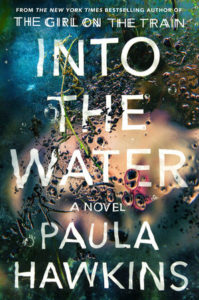 Paula Hawkins
Paula Hawkins
Penguin Random House
$38
Reviewed by Lynnaire Johnston
I confess to having neither read nor seen The Girl on the Train, Paula Hawkins’ previous global blockbuster thriller. A crime that, having read Into the Water, I shall redress forthwith because this writer clearly has wonderfully imaginative stories to tell.
This one centres on a small English town where an unusually large number of women have died in the local river – at a spot known as The Drowning Pool. The most recent death appears to be a suicide, just like earlier ones. But as the story unfolds it’s clear there is plenty of motive for this to have been a murder. It could have been carried out by one of any number of people – including those investigating the death. But you won’t find out who until the very last sentence.
But this is more than just a ‘whodunnit’. It’s about nothing and no-one being as they seem and the tragedies of lives that are based on lies, deceit, and betrayal.
Each – increasingly short – chapter is from another person’s perspective so it’s tricky at the start to keep track of who is who. And while it is a common method of writing a story, in this instance it feels less like a book and more like a movie screenplay. This constant flipping back and forth between characters is disconcerting as a reader. But I’m certain it will make it a great movie. Without perhaps even the need for a screenwriter.
If you enjoy thrillers, add this one to your reading list.
The North Water
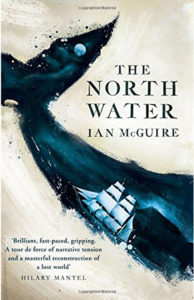 Ian McGuire
Ian McGuire
Simon & Schuster
RRP $40
Reviewed by Daryl Crimp
This is the second novel from the pen of Simon McGuire and already he has established a distinctive style. Set against an arctic backdrop at the end of the sailing, whaling era, The North Water is a tail of skullduggery, deceit, brutality, and hardship. Through a pacy narrative, McGuire contrasts the themes of human frailty and weakness against endurance, resilience, and triumph.
His prose is raw, often vicious, but totalling in keeping with the era he writes about, which is immediately engaging. The same applies to his characterisations: sharp, acerbic, raw, and believable. It’s a writing style that drags you into the past and makes it seem real.
The plot is straight forward and, to some degree predictable, but the story-telling is lively, entertaining, and fluid, with a few twists along the way. Ian is brilliant at introducing the minutiae of history into the storyline, which provides a richness to his writing. However, he does write in the present tense thereby breaking with common form, which I found it slightly irritating.
The North Water is well worth the read: pacy, entertaining, and exciting.
My Sweet Revenge
Penguin Random House
RRP $37
Reviewed by Lynnaire Johnston
Don’t know about you, but I like my literary diet varied. Sometimes I’m drawn to books that enrich my life and help make be a better person. Other times, I like junk food books – light, easy reads that hook me in, tempting me to steal a few minutes here and there during a busy day to see what my fictional character-friends are going to be embroiled in next. My Sweet Revenge falls into the latter category. The perfect book for a wet weekend when you want only pure escapism and entertainment, and have the peace and quiet in which to enjoy it. The plot is straightforward enough. Woman who has given away her career to do the wifely thing, finds out her successful husband is cheating. The twist is that instead of leaving, her revenge plan is to make him fall in love with her again. And then she’ll turf him out. Great idea. Doesn’t quite work out that way, however. Events are soon out of the spurned wife’s control with the storyline ducking and diving in the usual unexpected directions. Jane Fallon has written many of these types of books – six of them top 10 bestsellers. She’s also a television producer of such shows as ‘Teachers’ and ‘20 Things To Do Before You’re 30’. I’d venture she’s adept at finding new angles that lure in readers like me who enjoy a good chick lit every now and then (more often that I’m prepared to admit). It may look like a hefty tome, but I promise you’ll whizz through the 400 pages in less time than it takes to make and munch your way through a batch of Sunday afternoon scones. Addicts of literary junk food (like me) will love this.
The Gamekeeper
Portia Simpson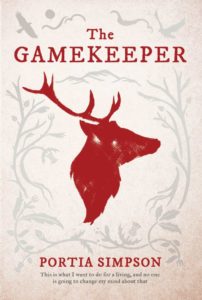
Simon & Schuster
RRP $40
Reviewed by Daryl Crimp
Portia Simpson was 24-years-old when
she became the first woman to qualify as a gamekeeper in Scotland, a male dominated field steeped in history and tradition. Through this memoir, Portia recounts the difficulties and obstacles she faced breaking into this conservative male profession and goes on to lay down a rich tapestry that is the life of a gamekeeper. Her writing style is crisp, clean, and yet highly evocative, gently drawing the reader into a multifaceted and textured journey that exudes warmth and humour; a contrast to the often harsh and imposing landscape around which the story is set. The structure of the book is wonderful: much like a highland bothy (cottage) on a bleak winter’s night that opens its wooden door against a gale to reveal a cosy fire, comforting dram of single malt, and good companionship. Portia’s story is peeled back in layers and by sharing broad brushstrokes of her life, amusing anecdotes, and enlightening characterisations of her colleagues and identities surrounding her, she captures the essence of the gamekeeper’s lot while highlighting some of the intrinsic values associated with this ancient profession. You get insight into the love these folks have for nature, wildlife, and their role in managing it, along with the value they place on hunting as a conservation tool. In our emotive PC world where a minority group of anti-hunters dominate headlines and perpetrate the lie that they are fighting for the rights and welfare of animals as opposed to power and control over other people, it is refreshing to see the prosaic Scots’ pragmatic yet loving approach to wild animal husbandry. This gamekeeper’s story is also underscored with other themes: male chauvinism and a feminist’s rise above it, struggle and triumph against the odds, the dichotomy of loving life yet killing to preserve, and the classic maturing of ‘young bull into old bull’. There is another theme that trickles along in the substrata like a mountain brook in the heather and that’s the question of nature versus nurture – aka destiny: Portia grew up in an urban family that had no real connection to nature, yet she was tomboyish from the outset, singleminded in her pursuit of the wilds, and seemingly pre-programmed to become a gamekeeper. The Gamekeeper is a compelling read that will sit comfortably in the hands of a wide audience, regardless of the hunting backdrop. For Kiwi hunters, apart from being a good yarn and entertaining read, it gives a good understanding of the history and traditions from which our hunting grew.


